Top 15 Aggressive Chess Openings You Should Know
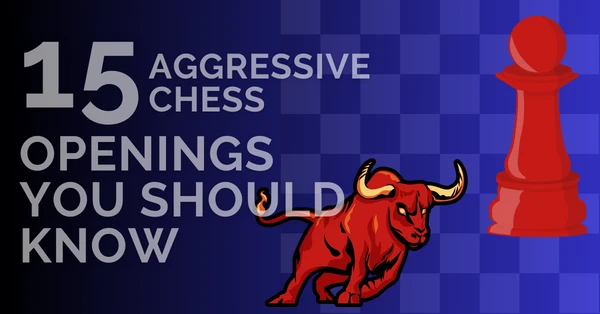
In this article, we are going to look at some of the most aggressive chess openings, for both white and black.
The course of a game is oftentimes given by your opening choice. We have many openings in chess and they lead to different types of positions.
If you are an aggressive player, the best opening for you would be one that leads to active, sharp positions where you can easily create an attack. For more positional players, openings that lead to quiet middlegames or even to complex endgames are probably best.
The Smith-Morra Gambit
The Smith-Morra Gambit is a great weapon against the Sicilian Defense and starts after the moves 1.e4 c5 2.d4 cxd4 3.c3:
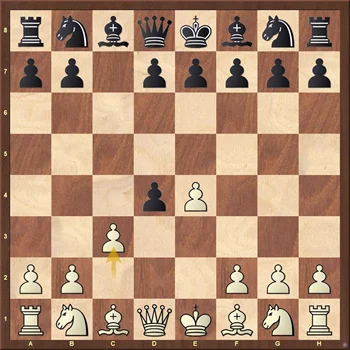
At this point, black has a choice between allowing white to take over the center after 4.cxd4, accepting the gambit with 3…dxc3, or declining the gambit with 3…d3 or 3…Nf6. If black accepts the gambit, white will get a huge development advantage after 4.Nxc3.
The resulting positions are very sharp and dangerous for black, making the Smith-Morra one of the most aggressive chess openings for white against the Sicilian.
Many players will decline the gambit and play 3…d3. By returning the pawn, black will try to quickly develop the pieces and avoid positions where white’s activity becomes overwhelming. The other option, 3…Nf6 will transpose to the main lines of the Alapin Sicilian where, again, white can choose aggressive set-ups that can be uncomfortable for the black player.
The Grand Prix Attack
Another good option against the Sicilian chess opening is the Grand Prix Attack. This is a simple chess strategy that doesn’t require learning a lot of theory. It appears on the board after the moves 1.e4 c5 2.Nc3 Nc6 3.f4:
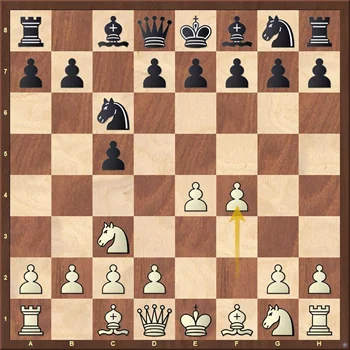
Rather than going into the main lines and opening up the center with d2-d4, white opts for a closed center, which will allow a kingside attack in the middlegame. White will develop the kingside knight to f3 and the light-squared bishop either to c4 or b5. The bishop on c4 can be particularly annoying since it will point at the f7 square. After castling short, white’s idea is to play for a quick f4-f5.
If the black king is still in the center, this move will open up the position and prevent black from castling short. If black has castled already, then this will be the beginning of a kingside attack. White will follow up with d2-d3, Bc1-g5 and Qd1-e1-h4, adding more pressure on the black king.
The Bird’s Opening
This is a very forcing chess opening with white and starts after move 1.f4:
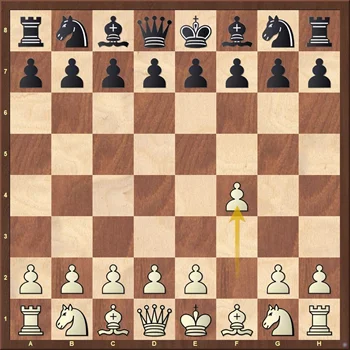
With this first move white controls the central e5 square and will create good attacking chances in the kingside later on in the game. It is quite an easy opening to learn since black’s possible setups are limited. White’s plan is straightforward and not easy to avoid – develop the kingside, castle short, and start a flank attack with g2-g4-g5. White’s setup is usually with Nf3, e3, b3, Bb2.
The light-squared bishop can go either to e2 or d3, to point at black’s king. After a short castle, the white king can go to the safer h1 square to prepare the g2-g4-g5 advance. The knight will move forward to e5, opening up the Queen, which will eventually make it to the h file (directly to h5 or via f3-h3).
Vienna Opening
The Vienna is an opening in chess for white that begins after the moves 1.e4 e5 2.Nc3:
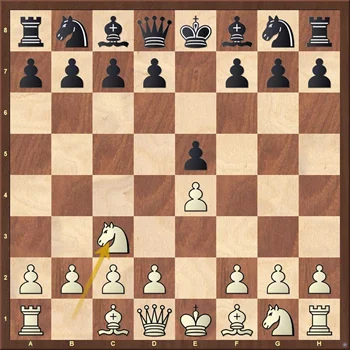
The idea behind developing the queenside knight first is to play a King’s Gambit delayed. White can follow up with f4 or Bc4, d3 followed by f4, attacking the black center and preparing a kingside attack in the middlegame.
This is a good opening for white that follows the opening principles in chess and can be played aggressively if white goes for a quick f4 or more quietly if white develops all the pieces first and then prepares a kingside attack.
The Italian Game
The Italian is one of the most popular chess openings for white. It is seen at both high and amateur level and begins after the moves 1.e4 e5 2.Nf3 Nc6 3.Bc4:
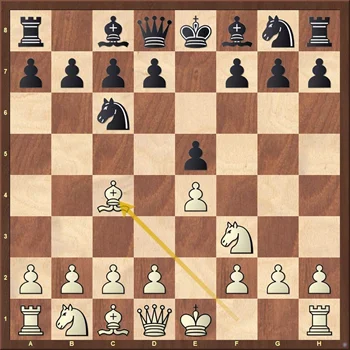
This is an opening that can lead to different types of play. White can go for aggressive lines, such as the Evans Gambit, or for quiet lines, like the Giocco Piano.
As the name suggests, in the Giocco Piano lines white goes for a slow play where a lot of manoeuvring is required. Nevertheless, we will find active ideas – white can play either in the center, for the d3-d4, or on the kingside, after the typical knight maneuvers Nb1-d2-f1-g3-f5 and h3-Nh2-g4.
The Evans Gambit
The Evans Gambit can be a fun way to play the Italian Game. It starts after the moves 1.e4 e5 2.Nf3 Nc6 3.Bc4 Bc5 4.b4:
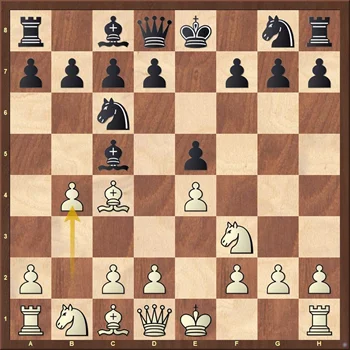
The idea of this pawn sacrifice is to bring a black piece on the b4 square in order to quickly take over the center with tempo. After either 4…Nxb4 or Bxb4, white will follow up with c3 and d4. The Evans can turn into a very fun chess opening since many lines contain a lot of chess traps and tricks black can fall for.
King’s Gambit Accepted – Rosentreter Gambit
The King’s Gambit is one of the most aggressive openings for white. It is also very forcing since black can’t avoid facing it. It is also a great chess opening for white if you want to surprise your opponent since it has some surprising ideas and traps. One of them is the Rosentreter Gambit, which appears on the board after the moves 1.e4 e5 2.f4 exf4 3.Nf3 g5 4.d4 g4 5.Nc3!? sacrificing the f3 knight:
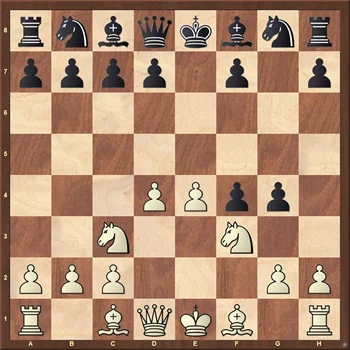
White gets very good play after gxf3 – black’s king is open and stuck in the center, while white is developing with strong threats.
We also recommend reviewing 10 Reasons to Play the King’s Gambit as well as 10 Best Chess Games on Queen’s Gambit.
The Danish Gambit
The Danish Gambit is not often seen in high-level games, but it can be a good chess opening for beginners. It leads to an open game after the moves 1.e4 e5 2.d4 exd4 3.c3:
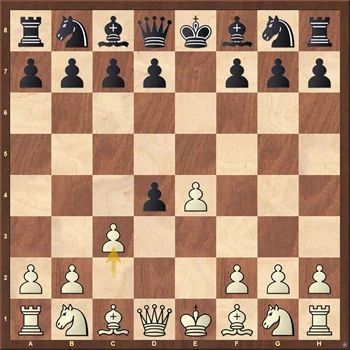
With these first chess moves white sacrifices one or two pawns in exchange for a quick development. Black needs to be very careful since this is a tactical chess opening and white has many tricky ideas. Even if black avoids losing material, the development advantage and the initiative will give white plenty of compensation for the missing material.
Blackmar-Diemer Gambit
This is a great gambit to know if you are a 1.d4 player. The Blackmar-Diemer Gambit starts after the moves 1.d4 d5 2.e4:
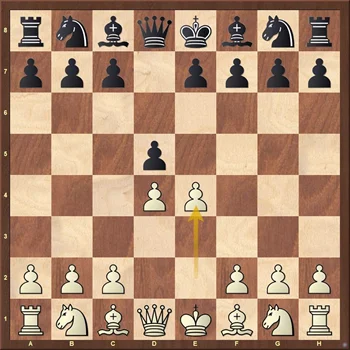
If black doesn’t accept the gambit, white will remain with a strong center and a big space advantage. After 2…dxe4, white will follow up with 3.Nc3 and f3 and play for a quick development. Black’s position is not easy to play and the second player needs to know the lines very well in order to avoid an opening disaster.
The Sicilian Defense
The Sicilian Defense is one of the best chess openings for black against 1.e4. It is a widely used opening and is present at all levels. It is a great choice at both the top level and beginner level. We enter the Sicilian after the moves 1.e4 c5:
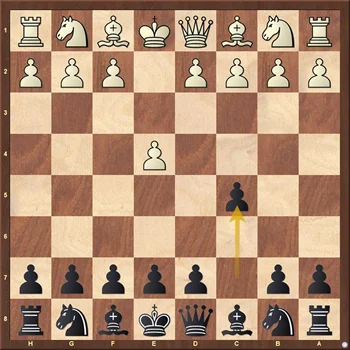
Black needs to be prepared to meet a wide range of options from white, but we can split those into two main categories. The Open Sicilian refers to lines that arise after the d2-d4 push. The Closed Sicilian refers to all variations where white doesn’t open up the center. These are also referred to as Anti-Sicilians.
Sicilian Defense – Godiva Variation
The Godiva Variation can be an interesting chess opening choice in the Sicilian. It is reached after the moves 1.e4 c5 2.Nf3 Nc6 3.d4 cxd4 4.Nxd4 Qb6:
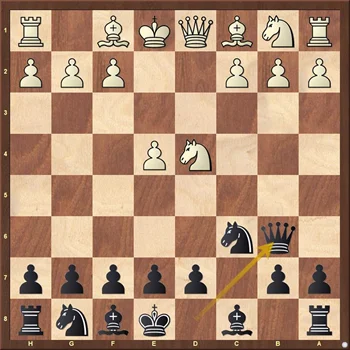
This line has been used at the top level and poses a direct threat – white has to do something about the d4 knight. Defending it with the dark-squared bishop isn’t an option here, since the b2 pawn will be hanging. It is also known as the Grivas Sicilian and can be a tricky line to play for white.
Black can transpose to other lines later on, one of the most popular transpositions being the Scheveningen.
The Englund Gambit
This is a very popular choice among beginners and appears after the moves 1.d4 e5:
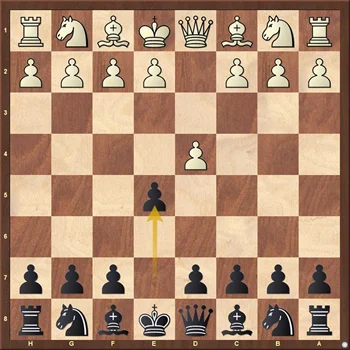
Black’s idea is to create an open game, where tactics are possible. While the game can become tactical after 2.dxe5, it’s important to know that white gets a good position with correct play.
There are a few important traps black can play for, but if white avoids them, the first player can get the initiative and a comfortable play.
The Scandinavian Defense
The Scandinavian is a simple and easy opening for beginners to learn. It appears on the board after the moves 1.e4 d5:
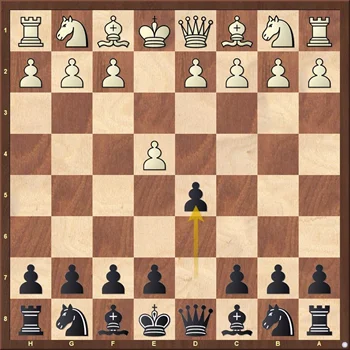
It’s another straightforward opening that white can’t avoid after 1.e4. Black’s idea is to attack the center and get an open position fast. There are different ways to play the Scandinavian, depending on your own style of play. Black can go for a more positional approach or can try some more active lines.
It doesn’t require learning a lot of theory and can be played in a simple way. Later on, you can expand your repertoire and add trickier, more complex lines to it.
The Icelandic Gambit
This is an interesting line of the Scandinavian Defense. Instead of capturing the pawn with the Queen on move two, black can choose to develop the kingside knight – 1.e4 d5 2.exd5 Nf6 3.c4 e6:
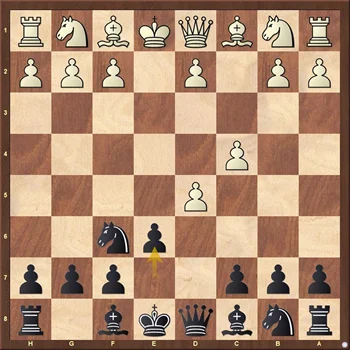
With the 3rd move, black offers a pawn for development. This gambit is one of the most aggressive lines of the Scandinavian Defense for black and has many hidden tactical ideas.
White shouldn’t get greedy and hang on to the extra pawn since black’s development advantage can be too much to handle. Black will usually get the sacrificed pawn back, but, even then, keeps good attacking chances and active play.
The Marshall Attack
This is a famous line against the Ruy Lopez for black.
It is one of the best openings for black and arises after the moves 1. e4 e5 2. Nf3 Nc6 3. Bb5 a6 4. Ba4 Nf6 5. O-O Be7 6. Re1 b5 7. Bb3 O-O 8. c3 d5:
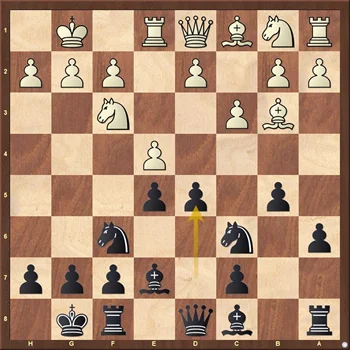
Now, after 9.exd5 Nxd5 10.Nxe5 Nxe5 11.Rxe5 white wins a pawn, but black gets the initiative. The idea is to follow up with 11…c6, defending the d5 knight and Bd6. It is easy to see that black’s position is more comfortable. Almost all black pieces are active and pointing at the white king. On the other hand, white has no pieces left to defend the king and has difficulties in developing the queenside.
With correct play, white can equalize, but play is very difficult. This is one of the reasons why many players avoid the Marshall with white altogether. Black has good results with this line at all levels, making it a very good weapon against the Spanish Opening.
Bonus Opening: Alekhine Defense
Alekhine is one of those openings where you give up the center.
Forget the theory. And then nonstruct a winning position from scratch.
It’s not for everyone. It’s only for the rabel chess players, ready to stay away from familiar path.
The reward is great.
If you ace it, you can win 60 or even 70% with Black pieces. How do I know? Daniil Yuffa did just that.
And he is ready to teach you in his new course Alekhine Defense: Attacking Guide.





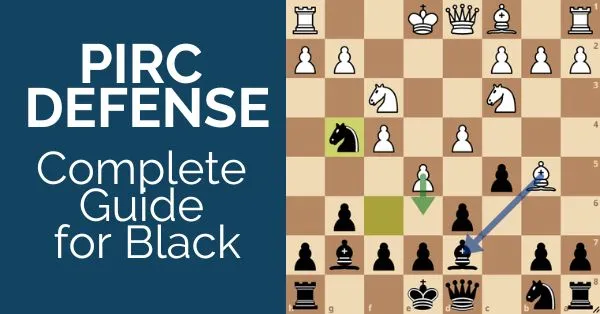




Comments: